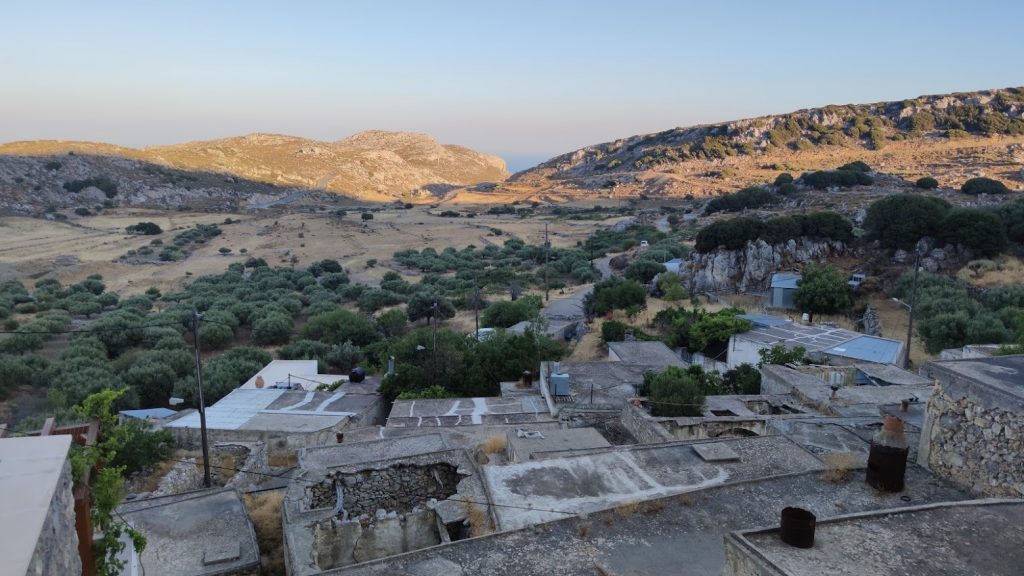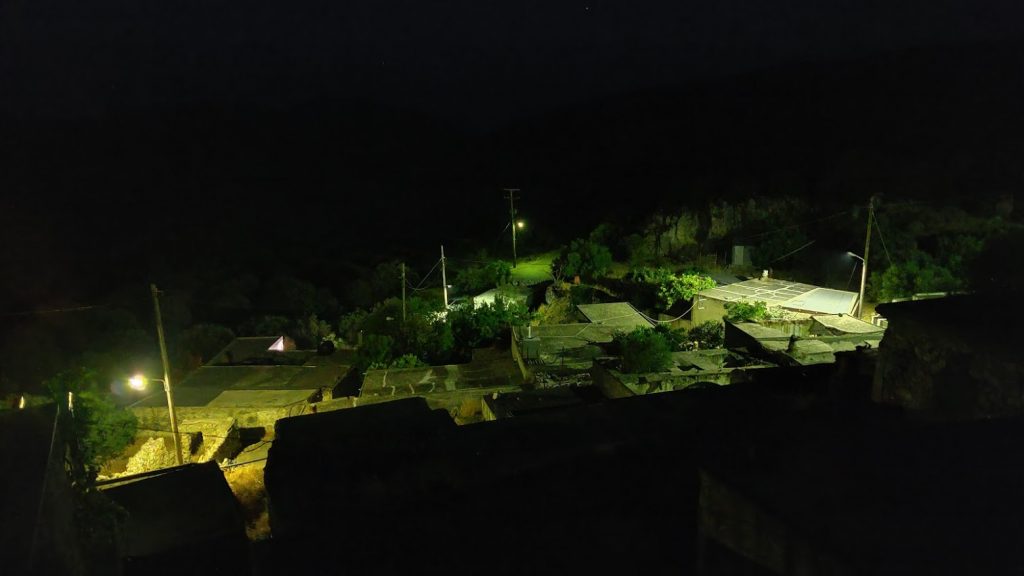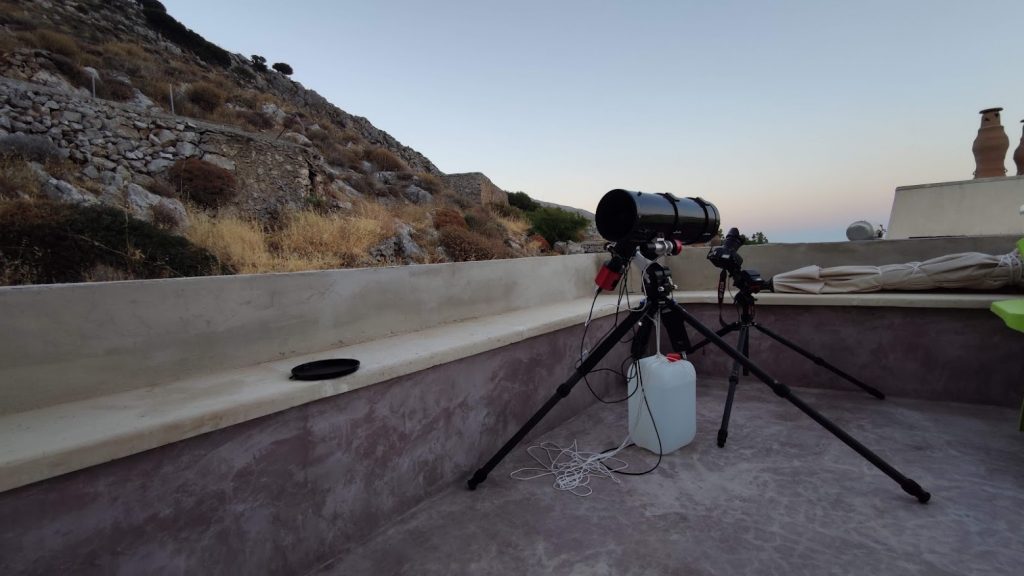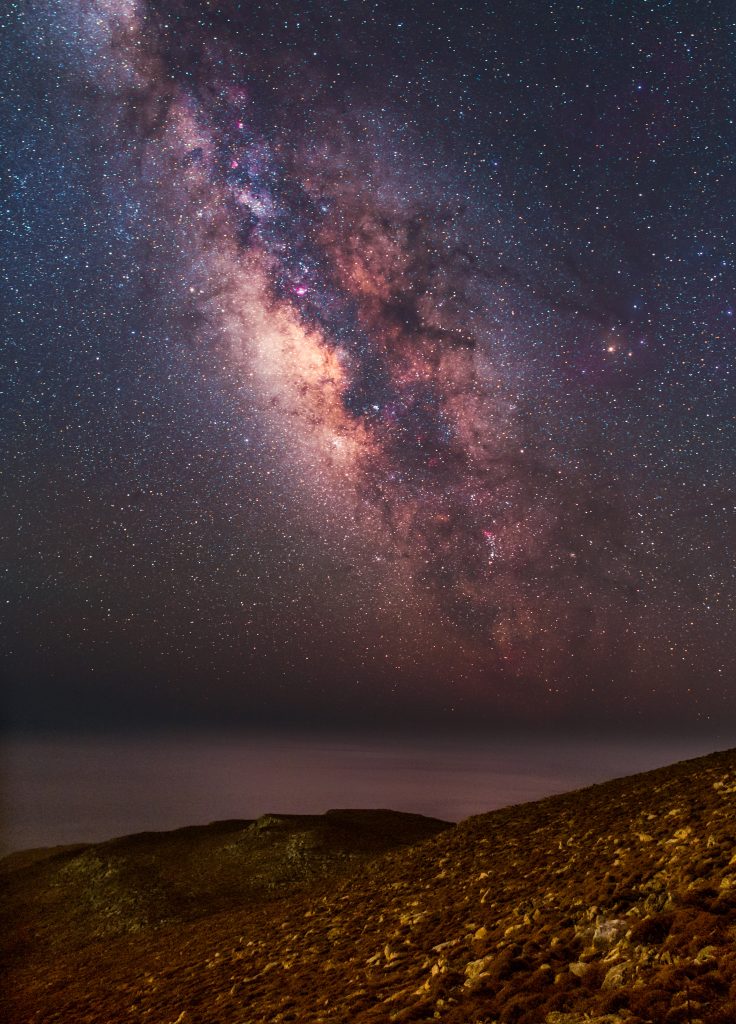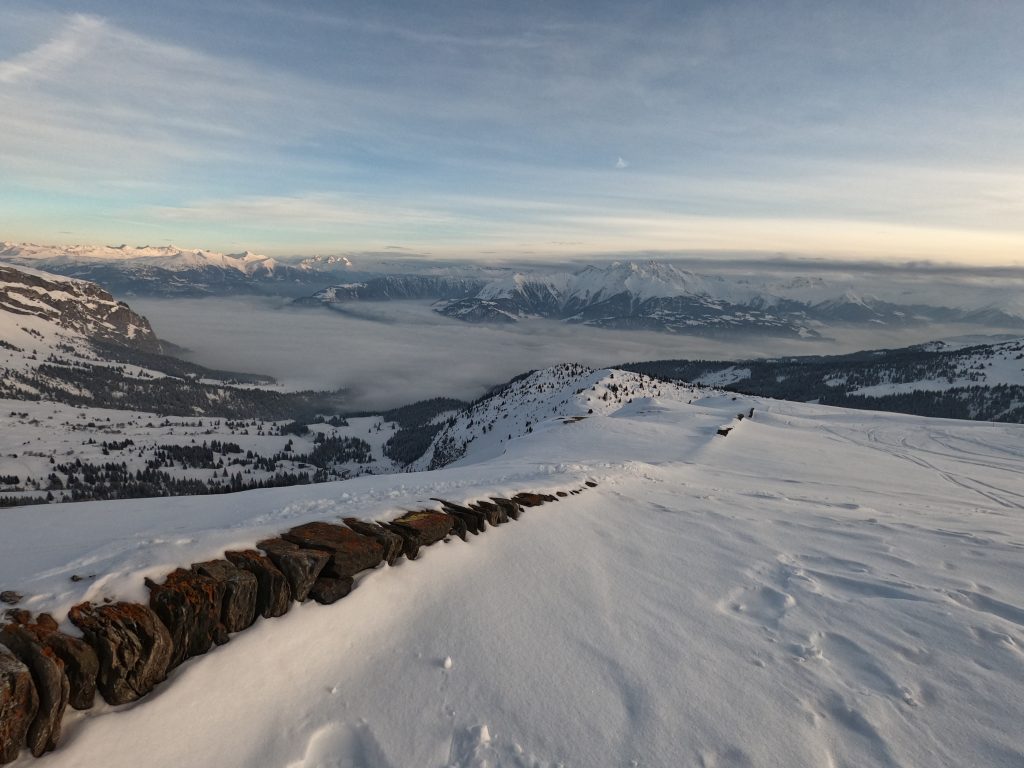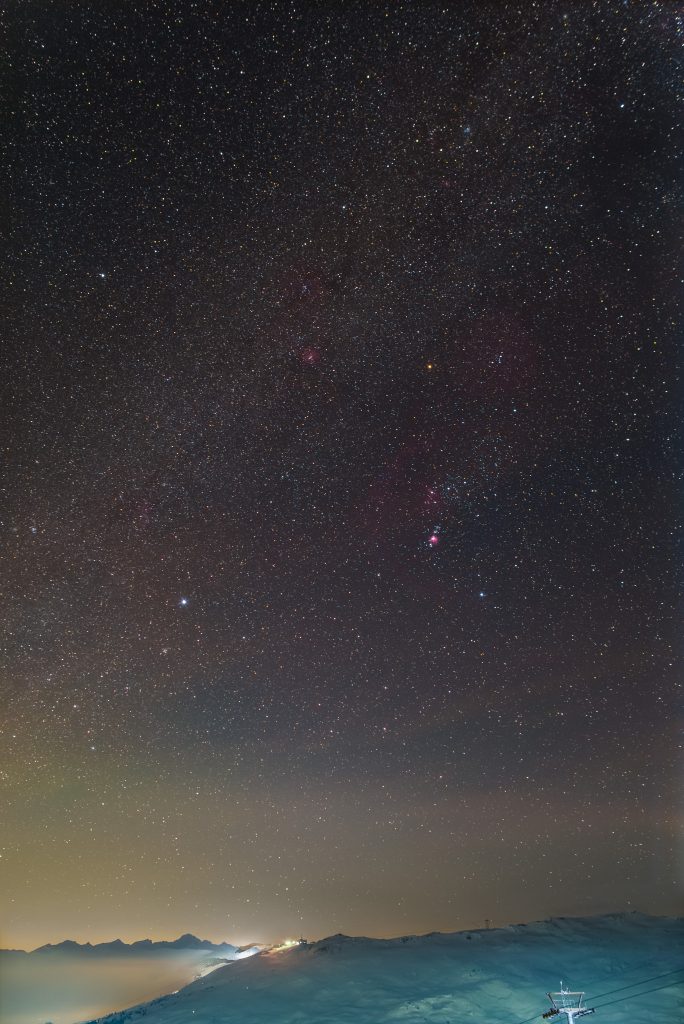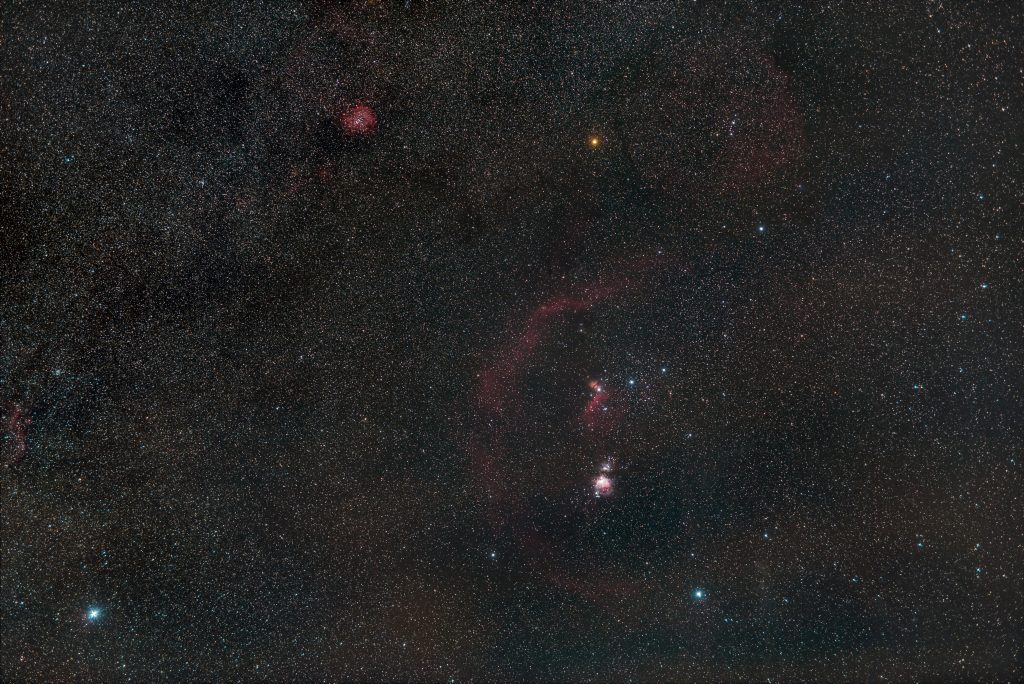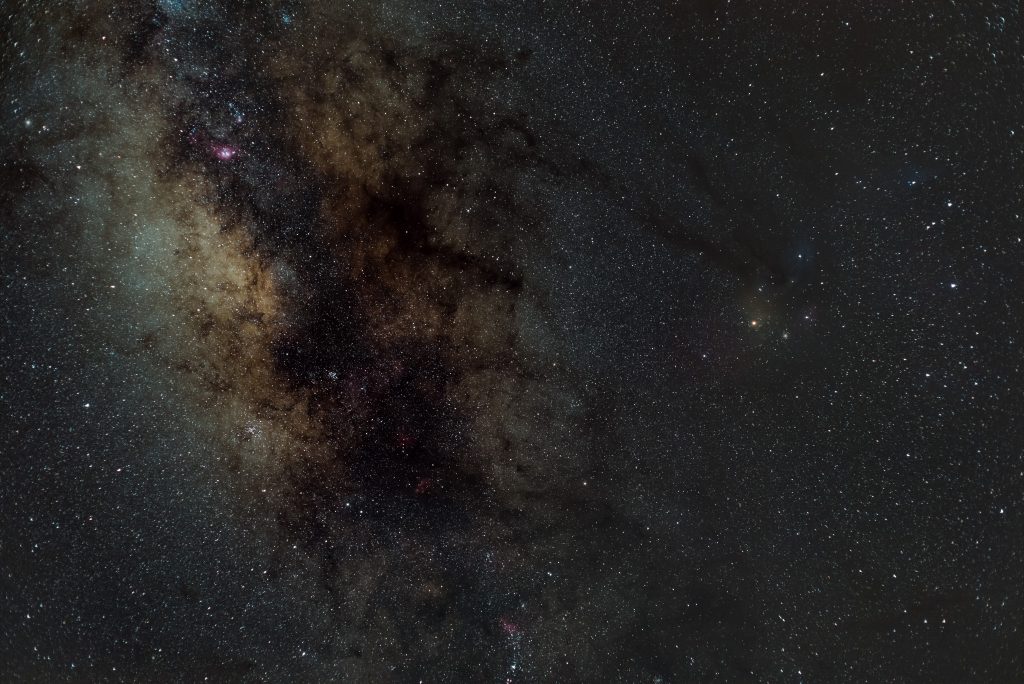I haven’t been able to photograph the stars for a very long time. I live in a valley where many rivers flow, which brings a lot of moisture into the air. This moisture condenses, which forms either fog or clouds. I was sick of this weather and decided to climb above the clouds and finally take some pictures. Like last year I chose Berghaus Nagens in Flims/Laax ski resort and combine this trip with a skiing vacation. So, how was it? Well, I have bad luck this year. I got only a single cloudless night out of five. Moreover, it was the last one. So, I was not able to photograph the whole night and around midnight I had to pack the gear.
There is a time wrap made by GoPro Hero 8 Black. A view to the south direction. Orion is rising, snowcats are preparing the slopes and the only light pollution comes from city Milan, which is 100 km away.
The primary target was a very difficult one – IC 2118 Witch Head Nebula. This reflection nebula is illuminated by the supergiant star Rigel (right leg of the Orion constellation). The dark skies are the essence and the Askar mini telescope did the job. However, I was surprised how terrible was the chromatic aberration. This can be partially corrected in postprocessing, but not fully. I think I will have to find a better scope.
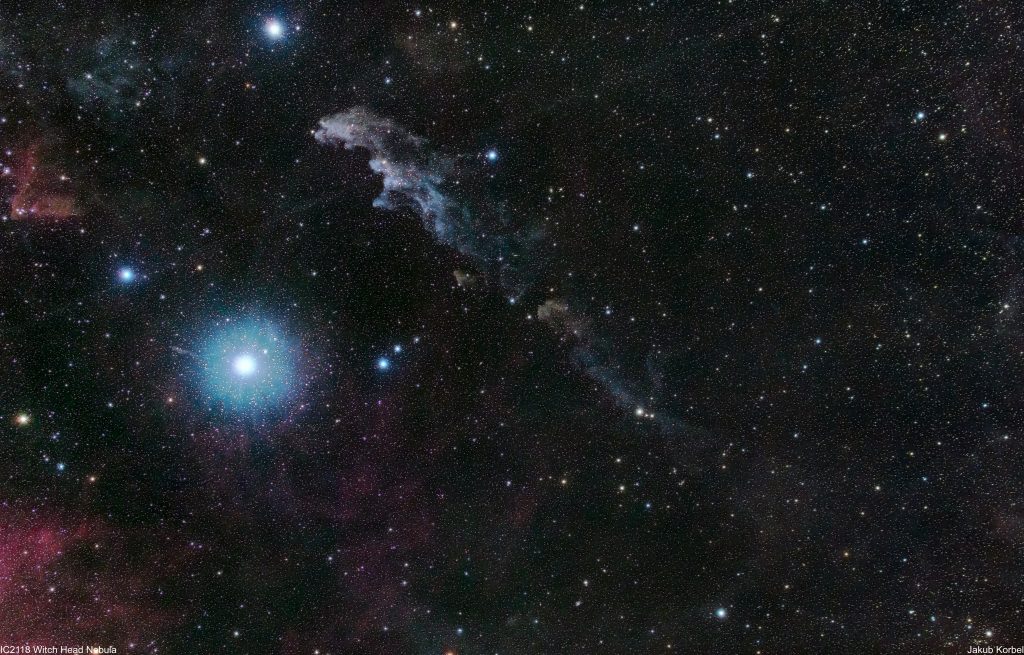
| Lens | Askar FMA180 F4.5 |
| Camera | Canon EOS 6Da |
| Mount | iOptron Skyguider Pro |
| Exposure | 35x180s, ISO 1600 |
| Date | 2021-12-30 |
Before the Orion constellation rose up, I captured the M45 Pleiades. It’s an integration of 63 frames each 2 minutes long. Here, the dark skies reveal some dark nebulae in the visual surroundings of the star cluster. Again, I was quite disappointed by the chromatic aberration of the Askar telescope.
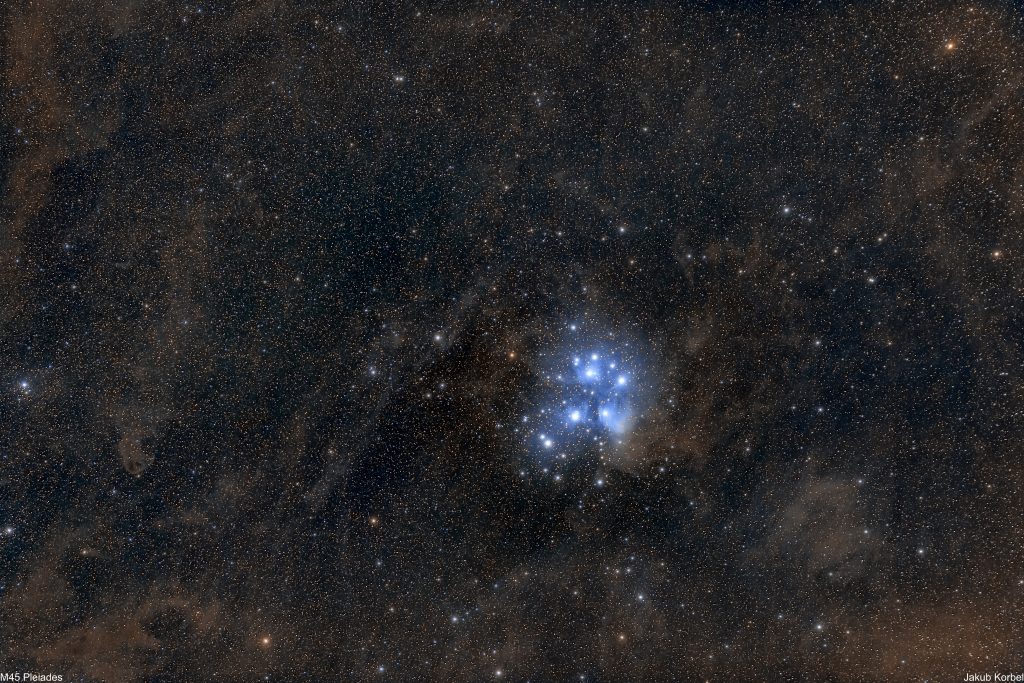
| Lens | Askar FMA180 F4.5 |
| Camera | Canon EOS 6Da |
| Mount | iOptron Skyguider Pro |
| Exposure | 62x120s, ISO 1600 |
| Date | 2021-12-30 |

